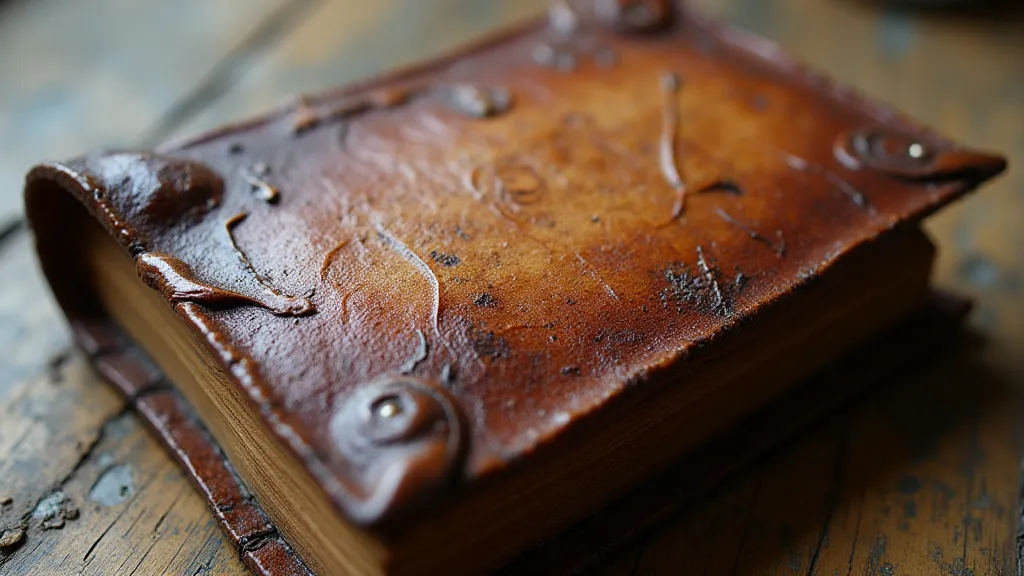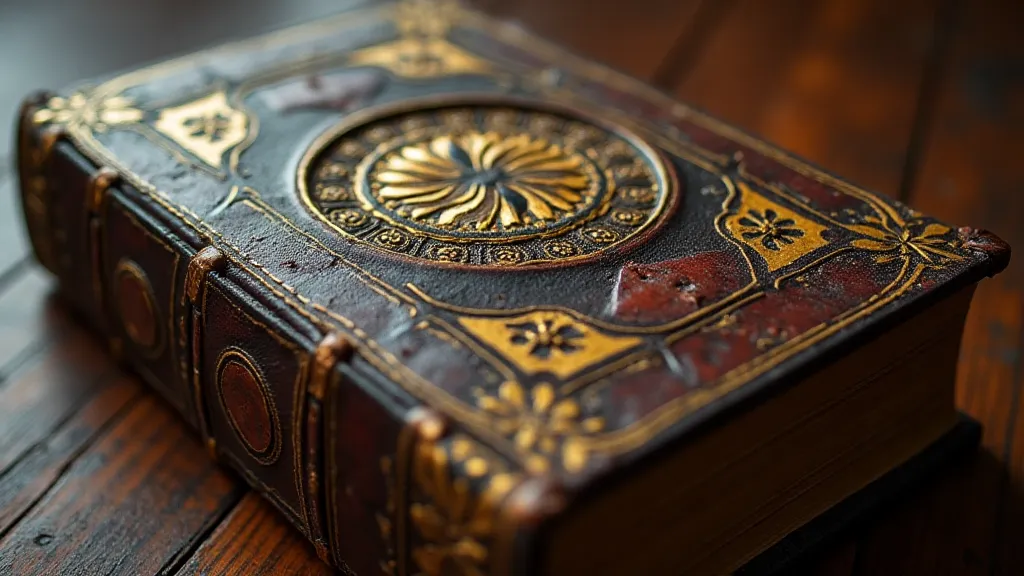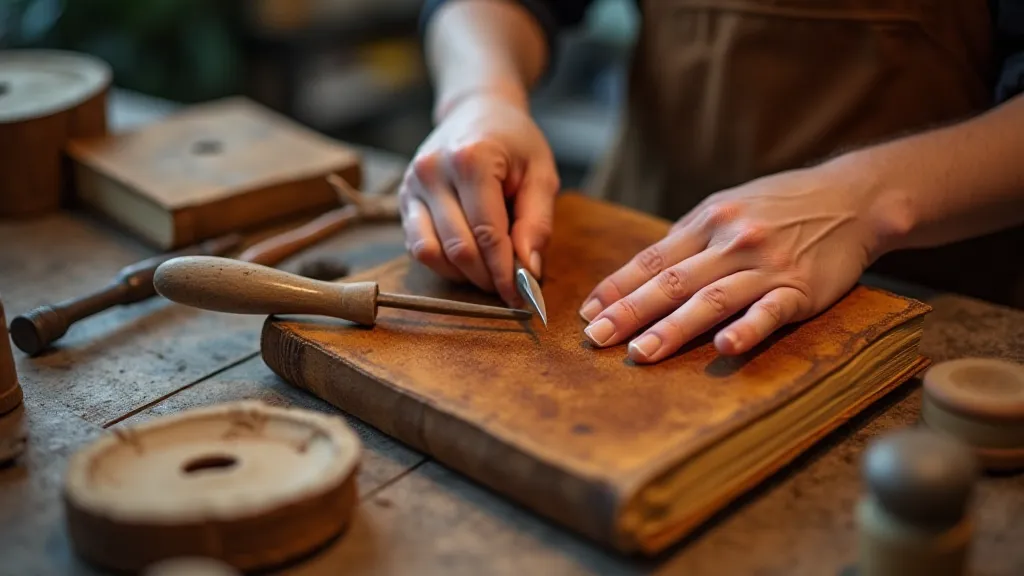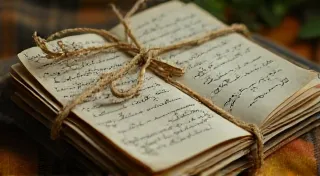Binding Time: A Chronology of Leatherworking Traditions in Book Arts
There’s a particular scent that clings to old books – a delicate blend of paper, ink, and, if you’re truly fortunate, leather. It’s a smell that whispers of forgotten libraries, of meticulous craftsmanship, and of the hands that painstakingly brought stories to life. I remember the first time I encountered it; it was in a dusty antique shop, clinging to a discarded accordion. The worn leather, the brittle keys – it felt like holding a secret, a tangible link to a past where artistry wasn't a luxury, but a necessity. That feeling, that reverence for the handmade, has profoundly shaped my journey into leather bookbinding.
The Seeds of Connection: Early Leather & Parchment
The story of leather in bookbinding doesn’t begin with ornate tooling or elaborate stitching. It starts much earlier, with the simple need to protect precious manuscripts. Before leather, manuscripts were often bound in wooden covers, easily damaged and vulnerable to the elements. The introduction of leather – first animal hides, then parchment (delicate, carefully prepared sheepskin or goatskin) – offered a superior level of protection. Early examples, dating back to the Roman period, utilized primarily leather as a structural element, a shell to safeguard the written word. Think of it less as decorative art, and more as functional preservation.
The transition from parchment to leather wasn’t instantaneous. Parchment, although costly, offered a surface far better suited to writing with quill and ink. Leather, being more porous, could bleed ink and was often less ideal for the scribe’s delicate hand. The development of tanning processes, gradually improving the consistency and writing surface of leather, played a crucial role in its adoption. Early tanning involved soaking hides in various solutions – often bark, oak galls, or even urine – a far cry from the chemical processes of today. The craft was deeply intertwined with nature and traditional knowledge passed down through generations. Understanding the nuances of parchment itself is vital; the material memory embedded within each sheet holds clues to the past, hinting at the original purpose and the hands that first inscribed upon it. Exploring “Parchment Whispers: Unlocking the Material Memory of Ancient Scripts” offers a fascinating glimpse into this aspect of book history.

Medieval Flourishes: The Rise of Decorative Binding
The medieval period witnessed a significant shift in attitudes toward bookbinding. As monasteries flourished and manuscript production increased, books evolved from mere tools of religious instruction to objects of considerable artistic value. This elevation of the book’s status fueled a burgeoning craft of decorative binding. Leather, often goat or calfskin, became a canvas for intricate designs. Blind tooling—impressed patterns created without pigments—became popular, allowing for elaborate ornamentation using specialized tools. The skill lay in understanding the leather's grain and how it would react under pressure, producing clean, crisp impressions.
The rise of illuminated manuscripts further spurred the development of leather binding techniques. The vibrant colors and gilded details of the manuscript pages demanded a binding that was worthy of their beauty. Complex board structures and sophisticated sewing patterns became more commonplace, showcasing the binder’s technical skill. This period saw the emergence of distinct regional styles – the Byzantine tradition with its vibrant mosaics reproduced in tooled leather, the Gothic bindings of Northern Europe characterized by their intricate clasp designs, and the Islamic bindings with their elegant calligraphy and geometric patterns. These bindings weren't just holding books together; they were visual statements reflecting cultural identity and religious devotion.
Renaissance Refinement: The Italian Bindery & Beyond
The Renaissance marked a period of significant innovation and stylistic change in bookbinding. The Italian Renaissance, in particular, witnessed a flourishing of artistic talent and a renewed interest in classical aesthetics. Italian binders, known for their elegance and sophistication, developed techniques such as full leather bindings (where the entire cover is made of leather), decorative inlays, and the use of gold tooling. The influence of Florentine bookbinders, like Francesco Bindinghieri, rippled across Europe, transforming the craft.
The introduction of printing with movable type fundamentally altered the book landscape. Suddenly, books were more accessible, leading to a greater demand for bindings. This, in turn, led to the standardization of some techniques while also fostering experimentation. The "stationer's binding," a simpler, mass-produced style, emerged to meet the demand for affordable bindings. Simultaneously, the wealthy continued to commission bespoke bindings from master craftsmen, fueling the continued evolution of artistic binding techniques. The very act of constructing a binding, especially in the Renaissance, was a form of narrative; the materials chosen, the techniques employed, and the decorative elements incorporated all contributed to a story beyond the words contained within.

The 18th & 19th Centuries: Styles & Specialization
The 18th and 19th centuries saw a further specialization within the bookbinding trade. The rise of industrialization led to some mechanization of certain aspects of the craft, but the traditional hand-bound book remained a highly prized object. The English style, characterized by its dark, often morocco leather covers and its restrained, yet elegant, tooling, gained prominence. French bindings, often using richly colored leathers and intricate designs, were also highly sought after.
The Victorian era witnessed a fascination with historical styles, leading to a revival of medieval and Renaissance binding techniques. The rise of collectors further fueled the demand for antique bindings and, consequently, the expertise of restorers who could preserve these valuable objects. The techniques of leather repair and rebinding became highly specialized, requiring a deep understanding of historical materials and methods. The lines between preservation and artistic reinterpretation often blurred, creating new avenues for innovation while honoring the past. The intricacies of the stitch as cartography – how the very act of stitching sections together reflects the narrative structure – is further explored in “The Stitch as Cartography: Mapping Narrative Through Binding Patterns.”
Modern Leather Bookbinding: Preservation & Revival
Today, leather bookbinding remains a vibrant craft. While mass-produced books dominate the market, there's a growing appreciation for the beauty and longevity of hand-bound books. The techniques passed down through generations are being preserved and revitalized by modern bookbinders who are pushing the boundaries of the craft while respecting its traditions. A return to using natural tannins and traditional tools resonates with a desire for authenticity and a rejection of disposable culture. The principles of structural integrity, while seemingly technical, are deeply intertwined with aesthetics; a binding that falls apart quickly diminishes the experience of reading. A failing spine, for instance, can be a source of great lament—a poignant reminder of time’s relentless march. Further insight into these concerns can be found in “The Spine’s Lament: Reflections on Structural Integrity in Leather Bindings.”
For me, the appeal of leather bookbinding isn’t just about creating a beautiful object. It's about connecting with the history of the craft, understanding the skill and dedication of the artisans who came before me, and participating in a tradition that spans centuries. It's about holding a piece of history in my hands, knowing that the leather I’m working with has a story to tell, and that the book I'm creating will, hopefully, have a long and meaningful life of its own.

The resurgence of interest in endbandwerk – the decorative corner reinforcements often found on antique bindings – highlights the ongoing evolution of the craft. These intricate details, once a standard feature, are now experiencing a revival among contemporary bookbinders, adding a touch of elegance and historical accuracy to modern creations. The challenge lies in mastering these techniques while innovating and pushing the boundaries of what is possible. Beyond the visual appeal, the careful placement and execution of endbandwerk reflect a deep respect for the materials and a commitment to creating a truly lasting piece of art.
The role of the bookbinder extends beyond the technical skills of crafting a binding; it is a testament to the enduring power of human creativity and the enduring importance of preserving our cultural heritage.





